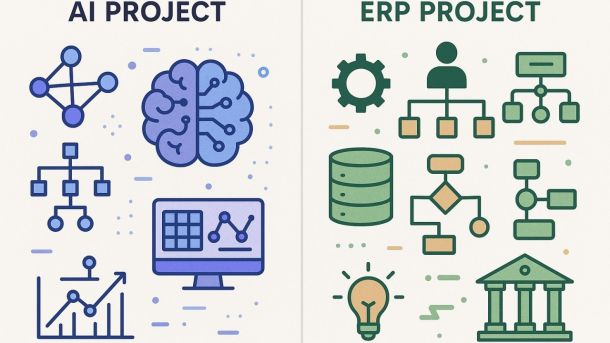What the Futures Wheel tells us about Nissan Motors & its bold transformation plan.
Few Months Back . . .
Early January, I published an article about the Nissan looming crisis. The title was “Possible Strategies or a Single Option”. We proposed three merger scenarios: Japanese Safety Net, Strategic Victory, and Strategy Failure. The focal issue was “how will the planned merge between Honda, Nissan and Mitsubishi unfold?”
The Strategy Failure scenario took over. The merger failed.
The scenario narrative was “Honda realizes that the existing challenges in the global car market, Nissan woes and other unforeseen factors (such as unpleasant surprises with USA tariffs) forces the merge to roll back. Honda is focused on defending its brands, re-allocation of resources away from Nissan — the later brand presence continues to shrink. Mitsubishi might take a different direction altogether.”
Now what?
One month back, on May 13, and after Ivan Espinosa took over as the new CEO in April, Nissan Motor Co. announced its aggressive and ambitious Lean Transformation under its “Re:Nissan” plan. The goal is to completely reshape the company into a leaner, more resilient, and profitable automaker by end of FY 2026 and beyond. That is just less than 18 months away! The company announced 7 tracks that will guide the execution of the Re:Nissan plan.
In this article, we experiment with using the futures wheel tool (as a key futures thinking tool) to explore the consequences of Nissan transformation. This can give us a clearer idea how the initial changes mapped will ripple through “the new” Nissan and its ecosystem. For starters, what is the Future Wheel?
What is the Futures Wheel?
Developed by Jerome Glenn in 1971, the Futures Wheel is a brainstorming and visual mapping tool. Its objective is to explore probable / plausible consequences of a momentous change coming up in the future. Its design allows a systematic and expansive thinking of the first, second and third order effects of that future change or transformation. The figure below is extracted from later research by Jerome Glenn showing how this tool can be used to explore African Economic Integration consequences.

Glenn, J. C. (2009). The futures wheel.
As you see in the figure, the wheel is built as follows:
Central Change: Here, you place the central future change that needs to be studied.
First-Order Effects: Simply, the direct consequences that come out from the center. This is the first ring.
Second-Order Effects: These are the result of the first order effect; they form the second ring. The branching effect is more visible here. The process can continue into higher order consequences. Indirect consequences of the first-order impacts form the second ring, and so on. And then you can branch into third order effects.
Probabilities and Impact: The tool is not built to come up with a numerical value relevant to risk analysis or impact. The standard utility of the tool does not add numbers across the rings or the branches.
The First Order Consequences of Nissan Transformation
This can be represented through the seven main pillars announced by Nissan. To enable the Lean Transformation, the seven circles across the first order ring will be the first set of consequences. For example, to achieve the cost reduction targets, the company will need to reduce the workforce by 20,000, consolidate factories, shut down some operations and apply an aggressive approach to slashing variable and cost fixed costs. From another perspective, to ensure a leaner implementation, process will need revamping — this applies to product development and supply chain.

Second Order Consequences of Nissan Transformation
The second iteration shows how second order consequences are created. We present some examples — the futures wheel tool never claims to be exhaustive.
Factories Consolidation will generate, by design, more utilization per factory and across the network given that 7 plants will shut down. On the other side, this should not be a smooth process, Employees will need training on the new context and the higher targets, new products and other components of the future state.
Supply Chain Revamp is one tall mountain to cross. There will be disruptions; not just because of a new structure but because of domino effect from other pillars such as cost reduction which will create conflicting objectives no doubt. On the other side, a more integrated network can generate positive outcomes given the right focus. Fewer suppliers, higher level of collaboration, aligned strategies and values are probable consequences.
Redefined Product Strategy will trickle down to markets and customers. Some markets will be on Nissan’s list no more; others will attract more focus. The whole GTM approach, on a global scale, will need a revamp on its own. Such actions will need to be aligned with consequences from other pillars.
The exercise can generate more second order consequences. Based on experience in practising the Futures Wheel, some second order consequences can be confusing; to which first order sequence to they actually belong? And this is good food for thought. You can go back and reflect on your first order consequences.

Third Order Consequences of Nissan Transformation
At this stage, the wheel generates its third ring. We start going into a higher level of specificity when reflecting on consequences. We select two second order consequences to branch out further.
Investments in Lean Resources & Expert: As a by-product of the tough lean and optimization journey, we expect innovation to start emerging once the first harsh wave recedes. Innovation capabilities start to form organically or even acquired. For the same circle, a new wave of lean initiatives can present themselves; the game expectations are become higher, and hence, a new horizon of how lean can transform can be a third order consequence.
Exit from Specific Markets can trigger two consequences. One is a threat to Nissan global position; a company who seems to be shrinking generates all doubts if they will still continue to be a global player. This doubt extends across the value chain from dealers to distributors to the final car owner. Similarly, the entire competitive landscape can change to an extent that the GTMs put in place will not be valid anymore.

Reflections
In classical SWOT language, Nissan is adopting a defensive strategy. When are organizations are caught between internal weaknesses and external threats, protection of market position is they key theme. Nissan is trying to continue being viable in selected markets. Slashing costs is another piece of the strategy puzzle where tolerance is zero. And while plummeting sales can continue to be the final nail in the coffin, the future might show opportunities that generates tail wind for survival and return to profitability as hoped for by the company’s management. The future wheel gives us a visual representation of domino effects. It helps us imagine unfolding future milestones and events if we start the transformation we plan, today.
References
Glenn, J. C. (2009). The futures wheel. Futures research methodology — version, 3, 19.


